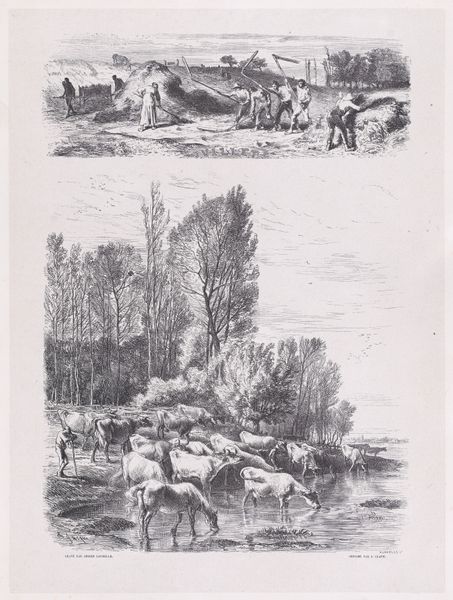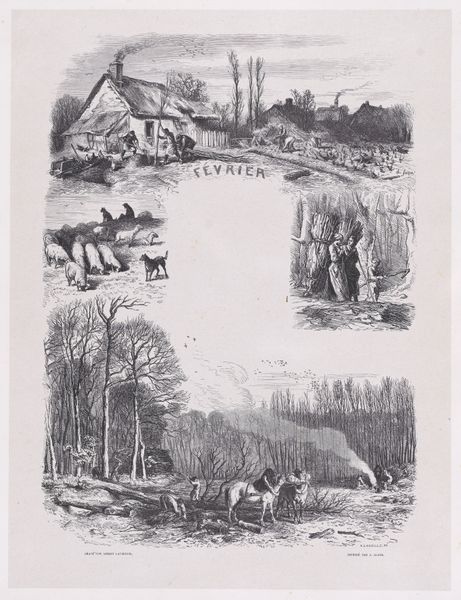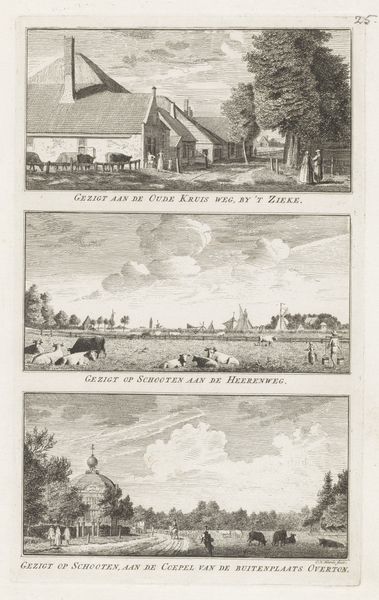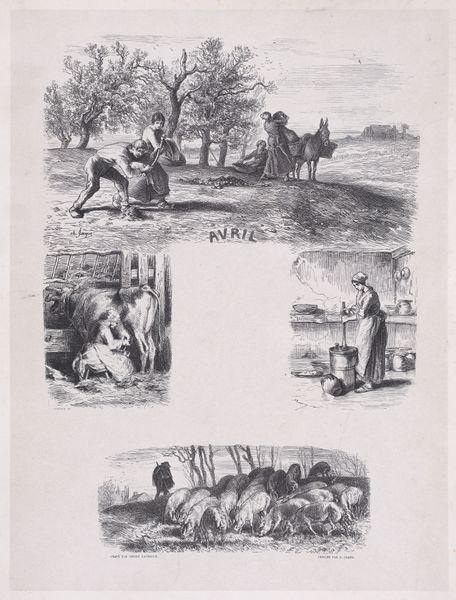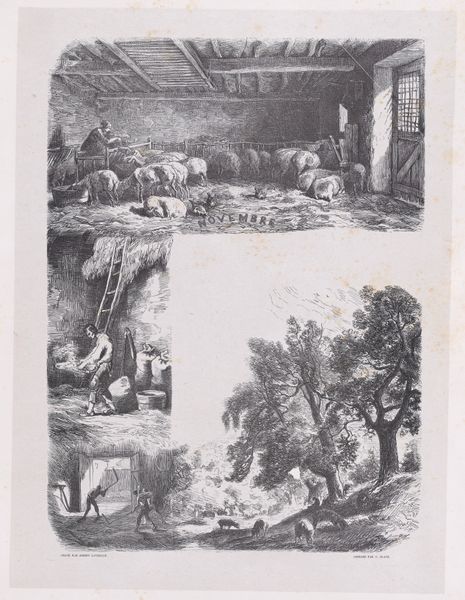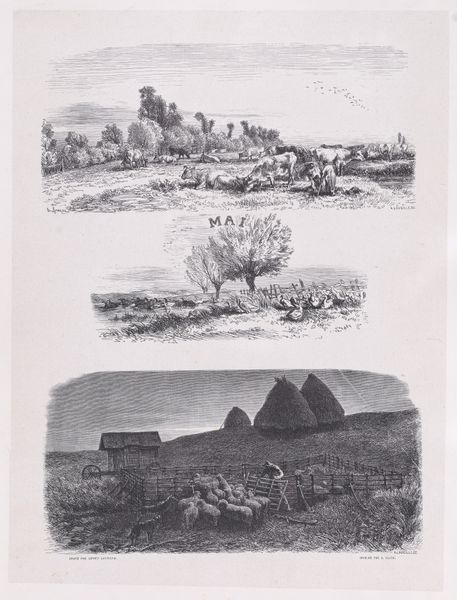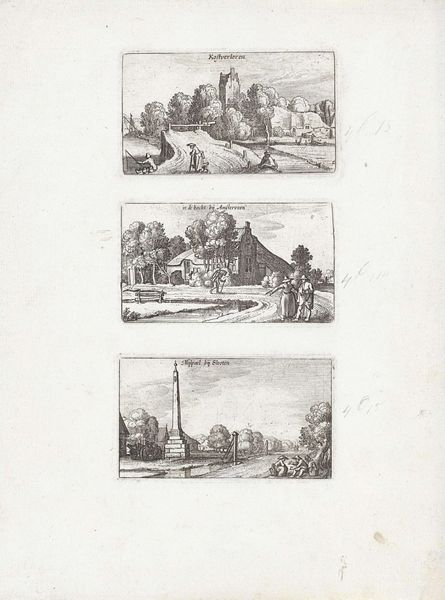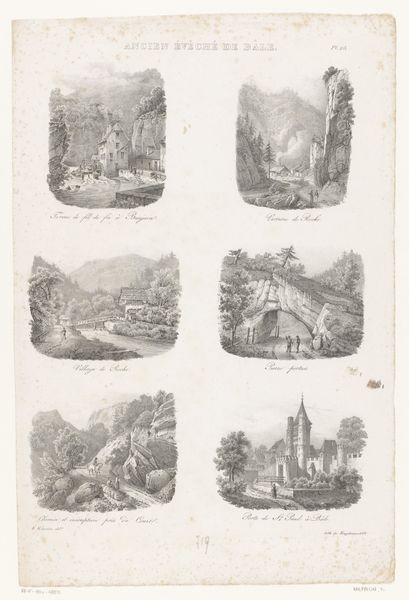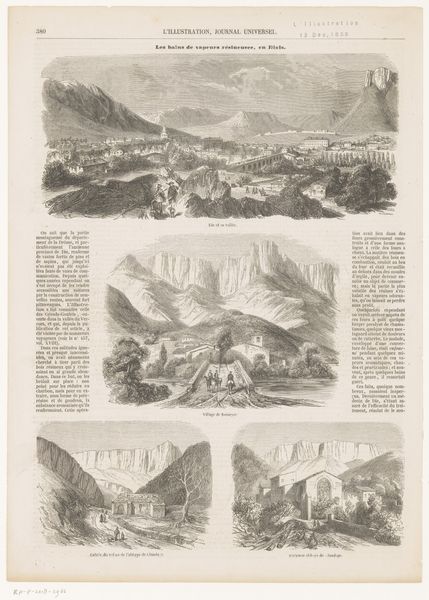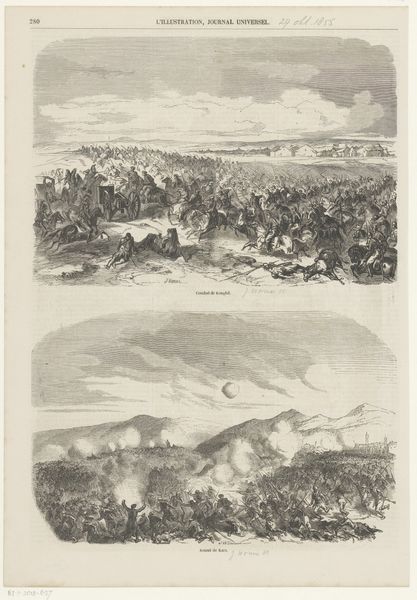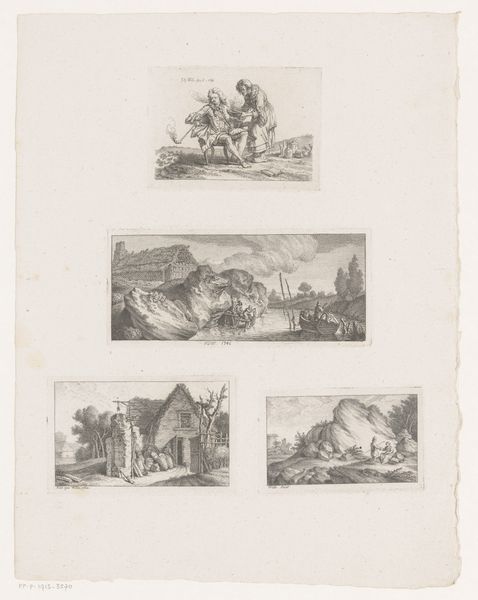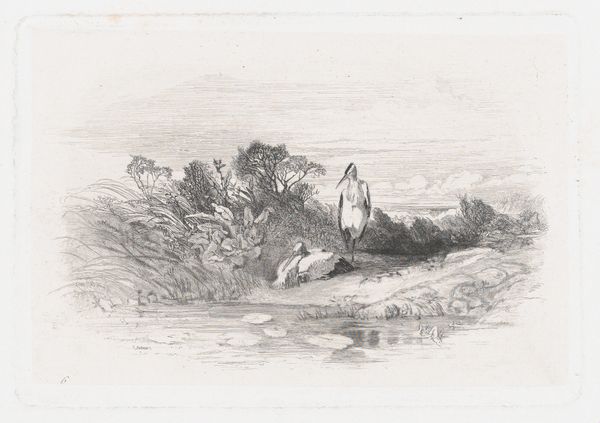
drawing, print, engraving
#
drawing
# print
#
landscape
#
genre-painting
#
engraving
#
realism
Dimensions: Sheet: 18 11/16 × 13 3/4 in. (47.5 × 35 cm) Image: 14 3/16 × 10 5/8 in. (36 × 27 cm)
Copyright: Public Domain
Curator: Look at this wonderful print titled "August, from 'Album of Rustic Subjects'" created by Charles Jacque in 1859, currently housed at The Met. It presents several vignettes of rural life. What are your initial thoughts? Editor: My first impression is of labour—intense, cyclical labour. You see so many people deeply engrossed in repetitive tasks here; the materiality of rural existence really takes center stage. Curator: The composition certainly guides our eye to appreciate those very aspects. The division into distinct scenes emphasizes different stages of harvest. The upper scene shows harvesting with rudimentary tools; the lower scene is a cluster near haystacks, all connected by Jacque's mastery of line and form. Note also the calculated placement of the vignettes. Editor: Yes, and consider the context of its production—an engraving designed for mass production. Prints like this were central to disseminating imagery of rural life and labor throughout society. We're talking about a period grappling with industrialization, so this evokes a longing for an agrarian past. Curator: Indeed, it serves as a powerful articulation of rustic Realism through composition, medium and form. See how he masterfully captures tonal gradations solely via hatching techniques and calculated placements of visual components to create an overall harmony and visual engagement? Editor: I'm more interested in Jacque's actual method here. Engraving demanded incredible physical control. Imagine the time spent on such detail. Furthermore, how was the piece circulated? Who could access and afford this glimpse into agricultural existence, and how does its consumption impact our perception? Curator: These are fascinating contextual considerations; the symbolic significance also interests me, for its structure reminds me of seasonal change, from planting and cultivating through processing. And look closer at his calculated rendering; note that none of the scenes share identical dimensions. Editor: Perhaps his rendering of scenes serves more as social documentation; that this visual information has the function of communicating specific production process that were at play. Curator: Absolutely, it’s a nexus point where formal, almost idealized notions and raw materials and labor intertwine. Editor: I think you're right. Together, that’s quite telling. Thank you.
Comments
No comments
Be the first to comment and join the conversation on the ultimate creative platform.
